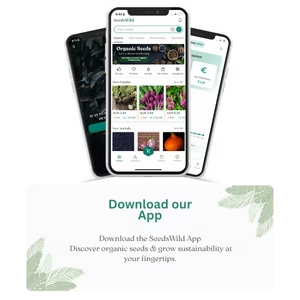Since Antiquity, Salvia officinalis has been prized for both its medicinal and aromatic qualities. Its Latin name derives from salvare, “to heal,” a testament to its long-standing place in traditional pharmacopoeia. This article provides a concise overview of its properties, practical applications, and the precautions required for safe use.
1. Botanical Profile
| Criterion | Details |
|---|---|
| Scientific name | Salvia officinalis |
| Family | Lamiaceae |
| Appearance | Grey-green, slightly downy leaves; mauve spikelets (May–June) |
| Cultural needs | Well-drained soil, full sun, moderate watering |
| Cold hardiness | Down to –15 °C (5 °F) |
2. Evidence-Based Benefits
The leaves contain essential oils (30–50 % thujone), diterpenes, tannins, vitamin K, and phenolic compounds such as rosmarinic acid. Together, these molecules underpin the following properties:
- Digestive support (bile stimulation): Sage benefits the digestive system and eases spasms, aiding digestion.
- Antiseptic and astringent action: Widely used in gargles for oral and throat health, it helps manage gingivitis, mouth ulcers, pharyngitis, tonsillitis, and related conditions.
- Antisudorific effect: Its ursolic-acid content, combined with astringent and antiseptic activity, helps regulate excessive perspiration.
- Gentle hormonal modulation: The herb’s phyto-oestrogens may partially offset declining oestrogen levels during menopause and relieve pre-menopausal symptoms such as hot flashes and PMS.
- Cognitive support (memory and attention): Clinical research in Alzheimer’s patients has shown improved memory following sage intake.
- Metabolic benefits: Hypoglycaemic and hypolipidaemic actions contribute to lower blood glucose, reduced HbA1c, and improvements in lipid profiles (decreases in total cholesterol, LDL cholesterol, and triglycerides).
Property
| Findings from studies* | Recommended use |
|---|---|
| Digestive support: Stimulates bile flow, reduces bloating | Post-meal infusion (1 tsp dried leaves, 5 min) |
| Antioxidant: High in rosmarinic and carnosic acids | Marinades, pestos, infused oils |
| Antibacterial & healing: Limits pathogenic growth (mouth, throat) | Lukewarm mouthwash (strong infusion) |
| Hormonal regulation: Eases hot flushes, excessive perspiration (menopause) | Cold infusion, max 3-week course |
| Cognitive support: Improves short-term memory and attention | Standardised supplement or glycerite |
* Sources: Phytomedicine, Journal of Ethnopharmacology, Fitoterapia.
3. Common Uses
3.1 Culinary
- Fresh leaves on risotto, white meat, focaccia.
- Infuse 4–5 dried leaves in warm olive oil; strain after 48 h to obtain an aromatic oil.
- Combine with honey and lemon in desserts such as sorbet or panna cotta.
3.2 Wellness
- Digestive tea: 1 g dried leaves per 150 ml water, up to three cups per day.
- Gargle: Cooled infusion plus a pinch of salt to soothe throat and oral mucosa.
- Hair rinse: Final rinse with cold infusion to reduce excess sebum.
4. Contraindications and Precautions
| Avoid if… | Reason | Possible Substitute |
|---|---|---|
| Pregnancy or breastfeeding | Uterotonic effect, potential lactation suppression | Mild rosemary chemotype (camphor-free) |
| Epilepsy or seizure history | Thujone at high dose may trigger seizures | Lemon balm or vervain |
| Uncontrolled hypertension | Slight hypertensive action observed | Olive-leaf infusion |
| Continuous use without breaks | Thujone accumulation → headaches, dizziness | Cycle 3 weeks on / 1 week off |
| Undiluted essential oil on skin | Irritation, photosensitivity | Dilution ≤ 1 % in carrier oil |
Seek medical advice if you take medication, especially hormonal or antihypertensive treatments.
5. Cultivating Sage: Key Steps
- Sowing: February–March under cover or April–May outdoors.
- Spacing: Thin or transplant to 30 cm (12 in).
- Pruning: Reduce stems by two-thirds after flowering to maintain a compact habit.
- Harvest: Early morning just before bloom, when essential-oil content peaks.
- Drying: Hang bunches upside-down in a shaded, airy place.
6. Key Takeaways
- Salvia officinalis provides digestive, antibacterial, antioxidant, and hormonal support, validated by research.
- Dose and duration are critical: respect recommended quantities and rest periods.
- Home cultivation ensures quality control, lowers carbon footprint, and supports herbal self-reliance.
Bonus: Sage Infusion Recipe
Ingredients
- 1–2 g dried, crushed sage leaves
- 200 ml water
- Optional: honey and lemon
Method
- Bring the water to a boil.
- Add the sage leaves, cover, and steep for 10 minutes to preserve the essential oils.
- Strain. Sweeten with honey and add a splash of lemon if desired.
Used judiciously and with proper understanding of its limits, sage is a valuable addition to both kitchen and home apothecary.
Conclusion
With its powerful medicinal properties and culinary versatility, sage is truly a herb for every home. Whether you’re growing it for health or flavor, sage brings both tradition and science to your garden and kitchen. 🌿💚

